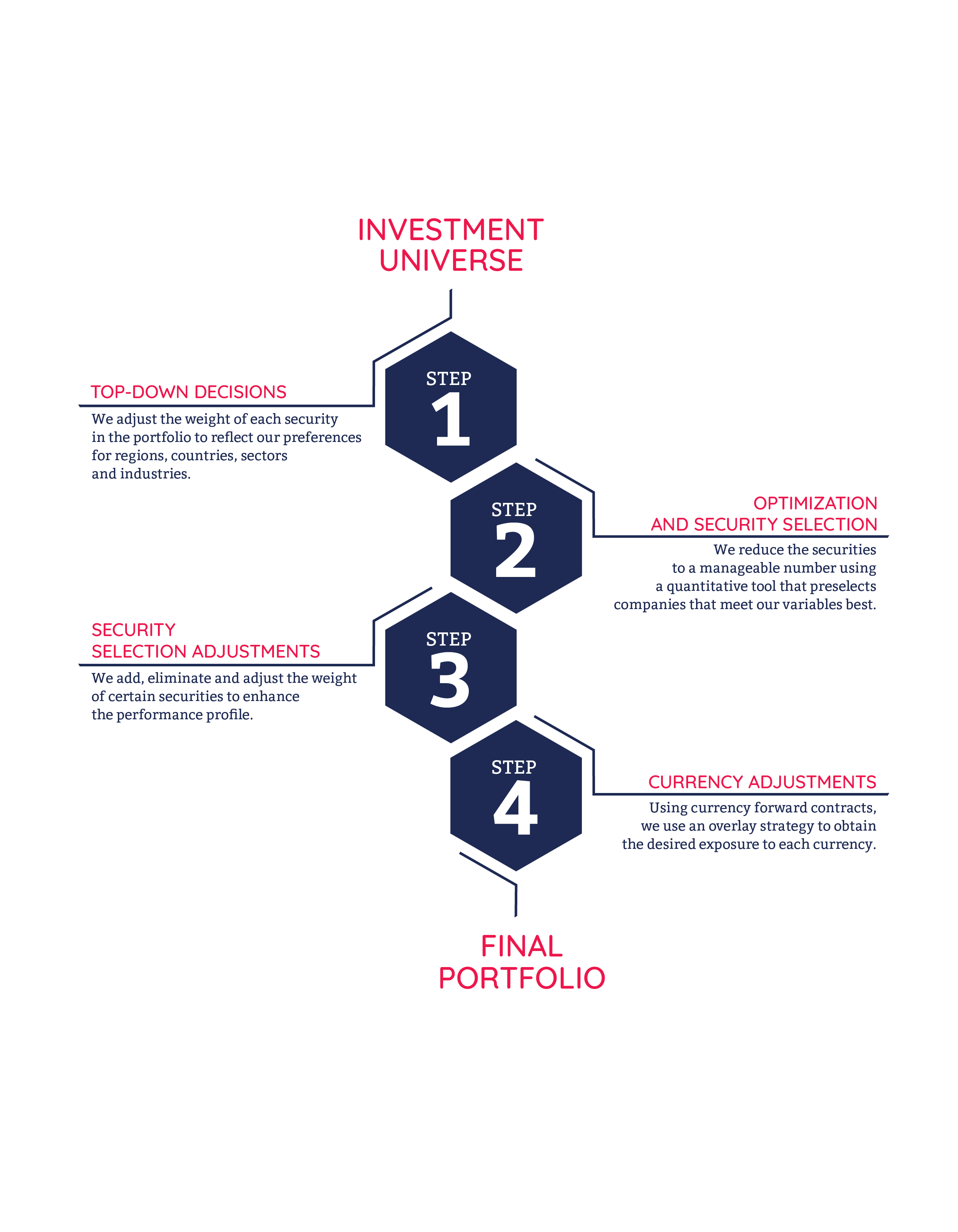A global and contrarian perspective
"Financial markets sometimes disconnect from economic fundamentals, but sooner or later, they reconnect. These moments are opportunities for Hexavest."
Our Investment Philosophy
Markets should be analyzed in their global context
We take a top-down approach to portfolio management. A company’s performance depends on the macroeconomic environment; to identify market opportunities and risks, our team therefore takes the time to analyze and understand economic and geopolitical issues and their impact on businesses.
Diversification of investment decisions throughout the various cycles is essential
We actively manage our exposure to regions, countries, currencies, sectors, industries and securities. We believe that, by identifying opportunities from amongst many potential sources of return, we gain the flexibility to offer a performance that is stable over time.
Preservation of capital is the key to long-term value added
Cautiousness is essential to our investment culture, so our approach includes a value bias and our positioning is often contrarian. In our opinion, that is the only way to avoid excesses and bubbles. We would rather miss an opportunity than lose money.
A rigorous process is the best way to maximize active management
Our fundamental investment process is based on systematic analysis of three vectors: the macroeconomic environment, an assessment of the markets and investor sentiment. This disciplined approach is supported by quantitative tools that minimize human interpretation bias.
"A good dose of contrarian opinion helps us avoid the traps occasionally set by the comfort of consensus."
Our Process for Discretionary Management
Structure and Rigour
We analyze each investment decision as a function of three factors that have a major influence on asset prices:
- The macroeconomic environment
- An assessment of the markets
- Investor sentiment
Our disciplined approach, combining analysis of macroeconomic and fundamental factors, creates a solid base enabling us to maintain the courage of our convictions.
Decision-aid Tools
We use quantitative tools, developed internally as a function of our approach, to validate our macroeconomic analyses and to generate investment ideas. We believe such tools are vital in a context of increasingly efficient markets. They also enable us to avoid the behavioural biases that affect all managers.
Risk Management
Our approach to market-risk management has historically resulted in low volatility and effective protection from market declines, owing to the value bias of our approach and our tendency to take contrarian positions. Moreover, an independent Risk Committee oversees the portfolios’ active risk.
Our Process for Systematic Management
Multifactor Model to Estimate Returns
- A logical argument (economic or financial) provides an understanding of how the signal is an explanatory factor in the relative returns on the instruments in the investment universe.
- The data needed to calculate the signal come from a reliable source and a sufficiently long history is available to perform simulations.
- Historical simulations provide empirical validation of the logical argument supporting inclusion of the signal.
- The correlation between signal and strategy (the other signals) is low, confirming the signal’s complementarity of.
- Inclusion of the signal makes it possible to simulate the desired results, namely a higher return or lower volatility.
- A signal is excluded if the performance component it is intended to model is better explained by a new signal.
- A simple signal is always preferable to a complex signal.
Weighting Signals within the Model
- Empirical and logical correlations between signals must be taken into account to ensure equivalent representation of the different data families.
- The weightings are static. They change when signals are added or removed.
- No attempt is made to seek the weighting that provides the best simulation results.
Risk Management and Diversification
We manage risk by setting limits on expected volatility, exposure to each position and index contribution to expected volatility.


